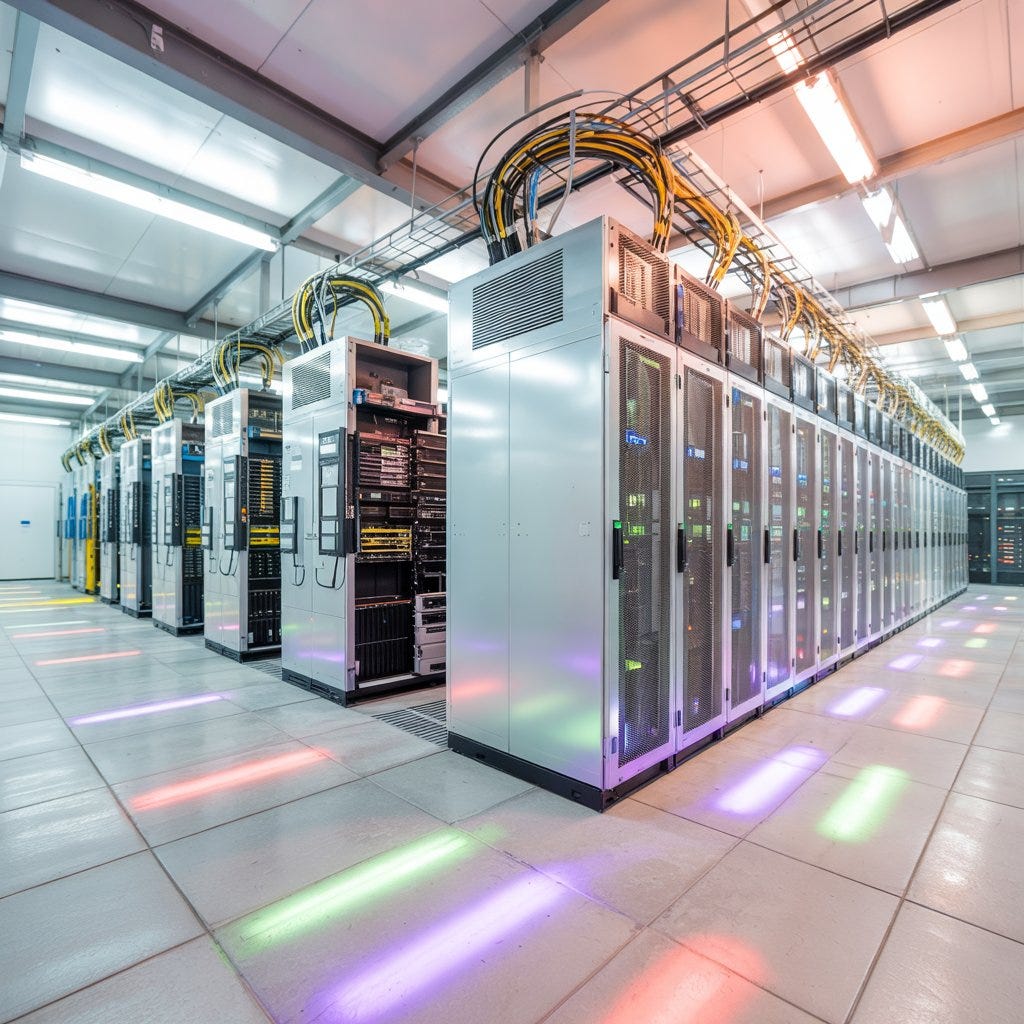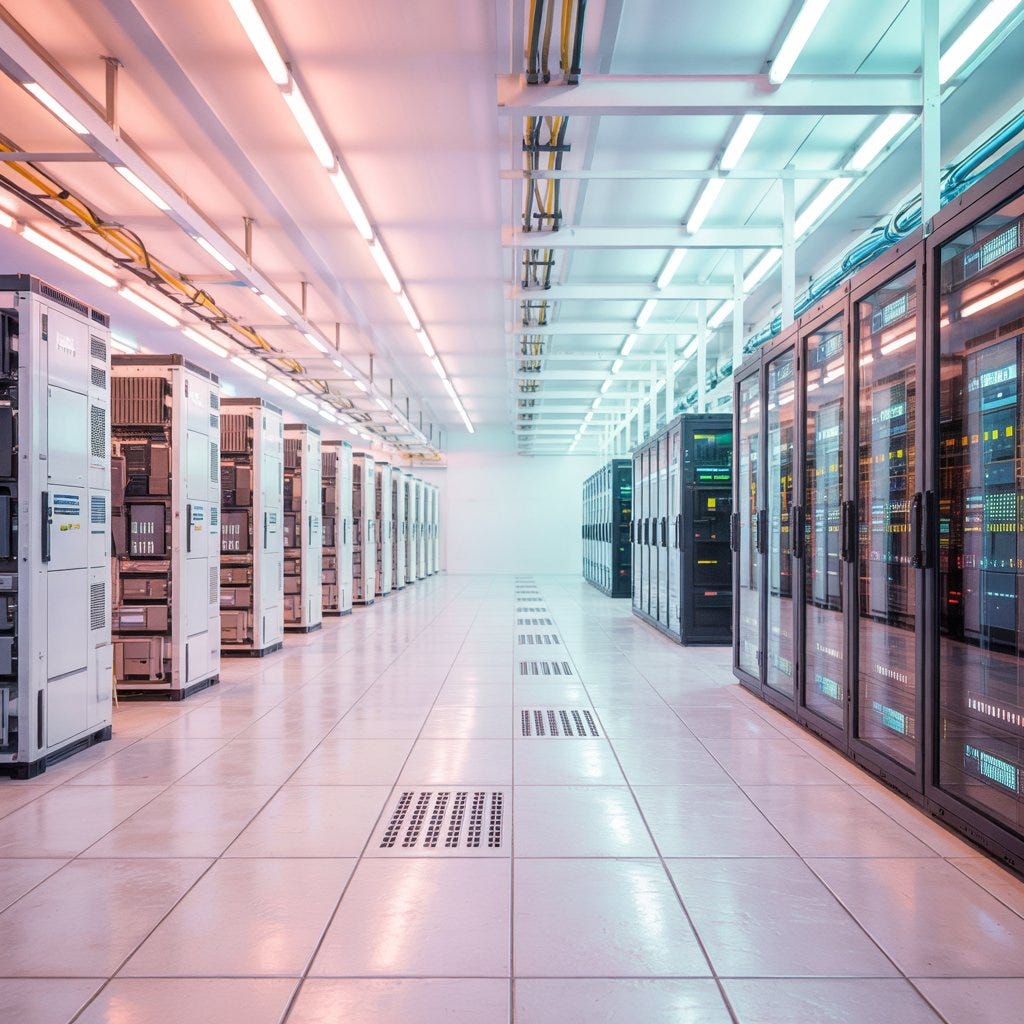From GPUs to Gridlock: Why Energy Now Defines the AI Power Map
The next wave of AI leadership belongs to those who control megawatts, cooling, and fiber, not just models or chips.
Welcome to Global Data Center Hub. Join investors, operators, and innovators reading to stay ahead of the latest trends in the data center sector in developed and emerging markets globally.
This guest post comes from Ahmed Ismail, a technology consultant, entrepreneur, and data center strategist.
The real contest: power as the foundation of intelligence
Every conversation about artificial intelligence usually starts with algorithms and ends with chips. Yet behind that noise sits the determinant of who leads next: who controls the power. For the first time in modern markets, electricity behaves like equity. Firms training frontier models compete not only for GPUs but for energized megawatts, water permits, and fiber routes assets that decide whether a model ships this quarter or next year. The global AI race is no longer defined by research breakthroughs; it’s constrained by physics, infrastructure, and interconnection rights.
Energy as the new moat
Past moats were built on data and distribution. The next generation will be built on firm power delivery, thermal stability, and network redundancy. An AI lab’s balance sheet now extends into the grid signed interconnection agreements, energized substation capacity, and parcels zoned for high-density cooling. Each represents months or years shaved off the development cycle. The International Energy Agency projects data-center demand could reach 945 TWh by 2030, double today’s usage. That scale means the competitive order of AI will be decided by who can energize first. Investors are already repricing readiness: power access and queue position now move valuations faster than chip counts.
The capital and power race reshaping global compute
The geography of compute is being redrawn by where capital, grids, and geopolitics align. The United States and China remain the poles of this race. U.S. firms dominate chip design and cloud infrastructure. China is catching up in research and manufacturing but still depends on U.S.-designed GPUs. Export controls on Nvidia’s A100 and H100 chips slowed China’s training cadence, pushing companies like Huawei and Biren to develop domestic accelerators.
The Gulf states are converting energy abundance into compute capacity. Saudi Arabia and the UAE are committing billions to data-center corridors, renewable grids, and sovereign AI initiatives. Their aim is not to catch up but to anchor relevance in the next technological order. Europe seeks digital autonomy through projects like Gaia-X, pairing sovereign-data rules with local chip and cloud investments. The focus is not speed but control—securing compute access without ceding data sovereignty. For investors, this realignment signals where cross-border joint ventures and energy-linked financings will cluster over the next decade.
Transmission queues: the new capital stack
Transmission queues, not chip shortages, are now the bottleneck. In Texas, large-load requests jumped from 63 GW in late 2024 to 156 GW by mid-2025, with approvals trailing years behind. Queue position has become a proxy for seniority in a capital stack: early entrants secure priority, latecomers face curtailment risk. Utilities and regulators now act as quasi-counterparties determining investor IRR. Delays cascade directly into training schedules, revenue timing, and stock valuations. The question inside every boardroom has shifted from “Can we raise capital?” to “When will the electrons arrive?”
Cooling and water: the invisible schedule assets
Every megawatt of compute creates heat. As rack densities exceed 80 kW, liquid-assisted cooling becomes mandatory. Design choices direct-to-chip systems, dry coolers, or evaporative towers determine both capex and permitting risk. A hyperscale campus can consume up to five million gallons per day. Projects with pre-approved recycled-water access or industrial-heat reuse clear permits months faster. These variables now appear in financing term sheets as schedule assets. Investors increasingly price “wet-site optionality”: parcels near reclaimed-water infrastructure or heat-recovery networks that support ESG compliance and faster approvals.
Fiber diversity: the hidden moat behind uptime
Compute without connectivity is stranded capital. Training runs rely on moving petabytes of data across regions for checkpointing and redundancy. Physical fiber routes not just contracted bandwidth determine whether clusters remain fully utilized. The Red Sea cable cuts of 2025 proved this fragility. When two of four major cables were severed, latency for Azure users spiked across Asia and the Middle East. Sophisticated buyers now ask every operator: how many physically diverse long-haul routes connect this site? The answer dictates uptime, SLAs, and ultimately revenue pacing.
The five indicators defining AI infrastructure competitiveness
Analysts tracking AI-infrastructure competitiveness are watching five indicators: mega-deals bundling chips and power, such as OpenAI-Oracle and CoreWeave-Tenaska; interconnection-queue reform velocity, since jurisdictions accelerating studies capture FDI first; the shift to hourly carbon-free matching as the new ESG benchmark; transparency on energized versus contracted megawatts to reveal true readiness; and diversity of long-haul fiber routes per campus. These variables forecast which operators train on time and which stall.
Financing the physical internet of intelligence
Capital structures are evolving to match the physics. Hybrid deals now collateralize PPAs and interconnection rights, allowing developers to raise mezzanine capital before full build-out. Project-finance and securitization models are blending with infrastructure equity to create energy-linked data-center vehicles. For investors, due diligence is expanding beyond PUE and EBITDA. Energized megawatts per dollar of capital, queue position, curtailment exposure, and cooling resilience now shape valuation.
Emerging markets: constraint meets opportunity
Africa, Southeast Asia, and Latin America hold both constraint and opportunity. Limited grid capacity and policy delays slow deployment, yet abundant renewable resources offer long-term advantage. Markets like Nigeria, Kenya, and South Africa are attracting hyperscale pilots. If these regions integrate renewable corridors early, they could leapfrog into sustainable compute hubs. Sovereigns aligning permitting reform with grid upgrades will capture hyperscaler investment first.
Strategic implications for boards, sovereigns, and investors
Boards must treat energy and interconnection as governance issues, not operational line items. Several hyperscalers have already formed internal Energy and Infrastructure Readiness Committees. Sovereigns face an industrial-policy inflection point: compute access now defines national AI capability as much as model research. Investors should view power, cooling, and network rights as core asset classes the new reserve holdings of the digital economy.
The bottom line: infrastructure is destiny
The decisive advantage in AI no longer comes from algorithms, chips, or cloud contracts. It comes from the physical capacity to feed them. Power, cooling, and connectivity form a three-dimensional moat that rewards those able to synchronize engineering with finance and policy. Until interconnection queues shorten and dense thermal envelopes become universal, energy control will remain the deciding edge of the AI race.
Guest Author: — Technology consultant, entrepreneur, and data-center strategist. He partners with hyperscale operators on clean-energy deployment and serves as a Google Data Center Community AI Fellow and on Heartland Forward’s Gen Z AI Council.


